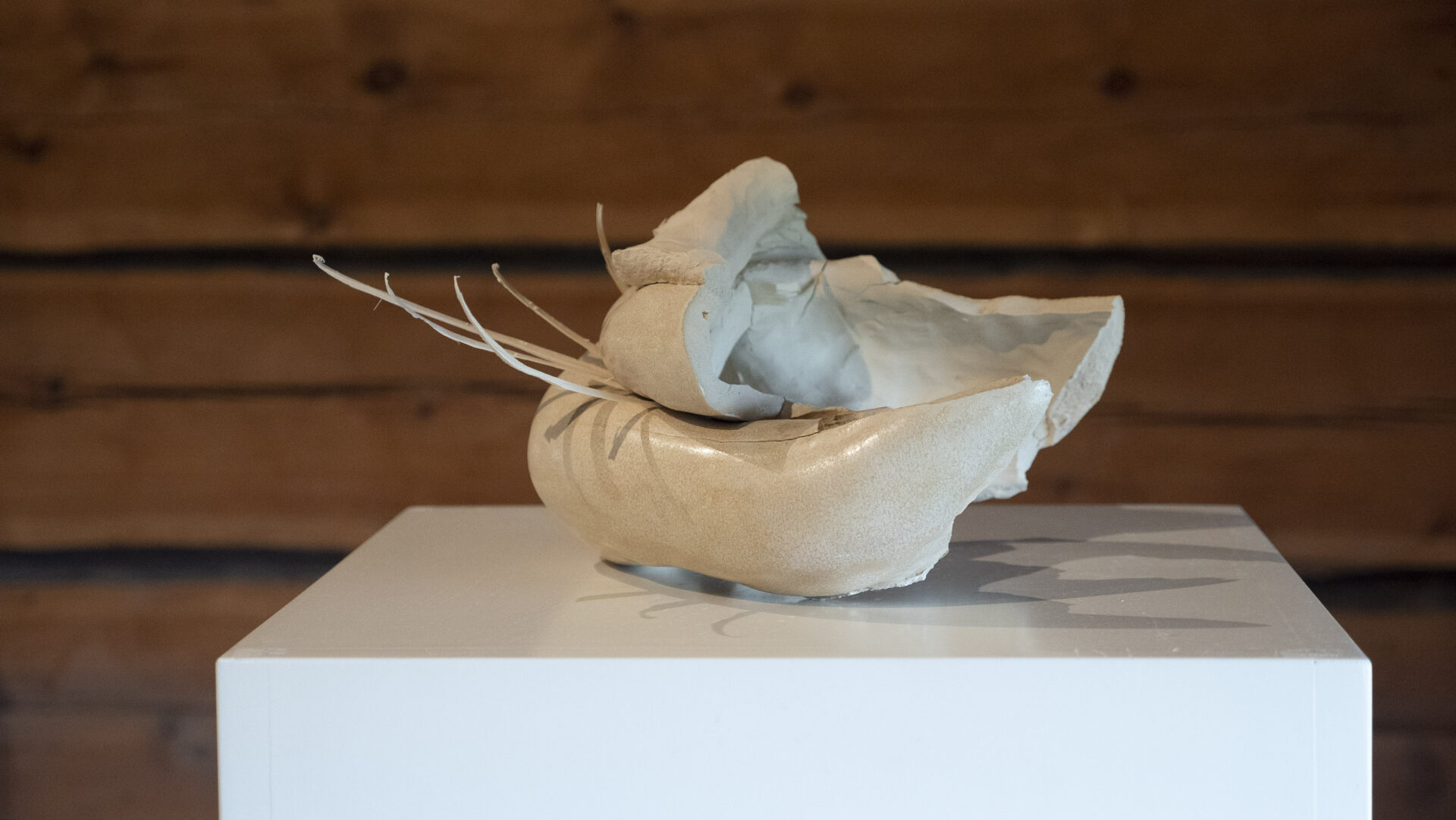The forms come from the body – the stomach, the inside, the outside. The stoneware clay is fired and glazed. I get attached to some of the forms – they are redone, again and again and again. Others don’t even reach the kiln. They get soaked right away to forget that they were thoughts my hands been thinking. But the sculptures also have a will of their own.
And they crack.
I had a friend visiting the studio. She looked at a sculpture that was on the table between us and ran her finger over a crack. I knew it would crack before I put it in the kiln but burned it anyway. Where do you crack, she asked me. Where do I crack?
I’ve been quite angry, for a long time. At everything possible – an anger at history, a powerlessness at the result and a resignation at how it continues in the same way into the future. These feeling are transmitted into the sculpture. I throw it on the floor or hit it with a hammer. Burns it and press wooden sticks into it.
I read about Mai. He was the first man from the Pacific Islands that the British managed to bring to Europe in the 18th century. They had tried before but no one had survived. Mai was exotic, foreign, exciting. In the eyes of the British. He was proudly presented as an equal when appropriate but just as often as the exotic Savage. An ascribed title, not an independent rebel. Preserved like all other objects found on these voyages. Like a treasure from afar, discovered only when the British saw him. Saved, stored and preserved.
My sculptures are the body, both my own and theirs. Savages or Rebels. They have a will of their own, but so do I. When the sculpture cracks, I crack. When I crack, the sculpture cracks.
Clay is the foundation of Erika Stöckel’s work. Ceramic sculptures that resemble the body –
folds, creases and openings. It is an ongoing search for a form where new sculptures are added one by one. Each sculpture becomes its own individual and together they form a family. Objects become subjects and new members make the family grow.
Stöckel’s practice constantly returns to the question of the external gaze – how do we see ourselves through the eyes of others? It is a digging into power structures, exotification and colonialism and how this settles in the body and is carried on for generations.
With this exhibition, Stöckel has embraced the classic exhibition aesthetic where the collective of sculptures is spread out on podiums. It is a play with the role between us and them and how it constantly shifts between the sculpture and the viewer.
Exhibited at Sjungaregården, Granö (SE) 2023, produced by Konstfrämjandet Västerbotten, with support by Kulturrådet, Sjungaregården, Konstfrämjandet.

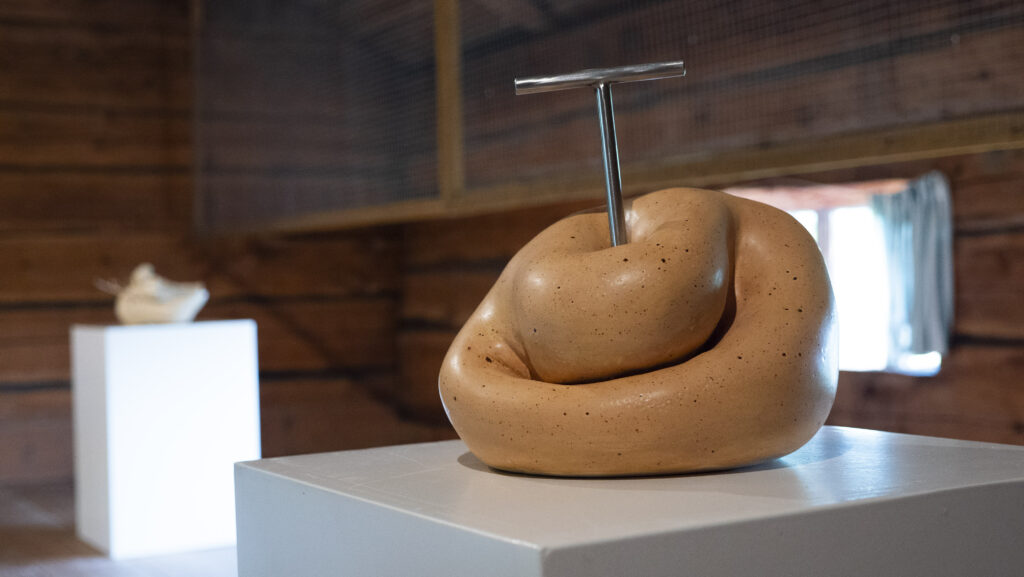
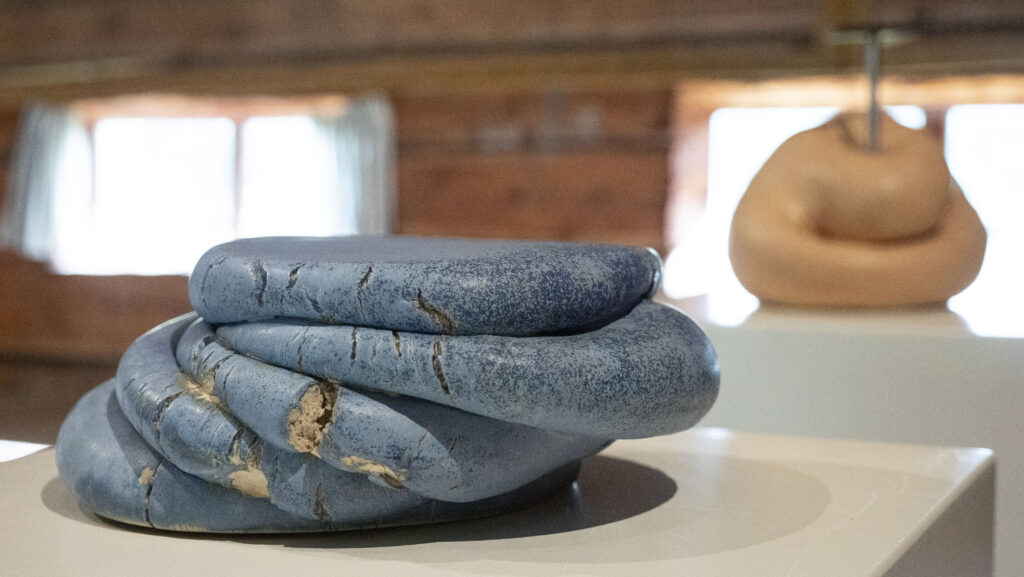
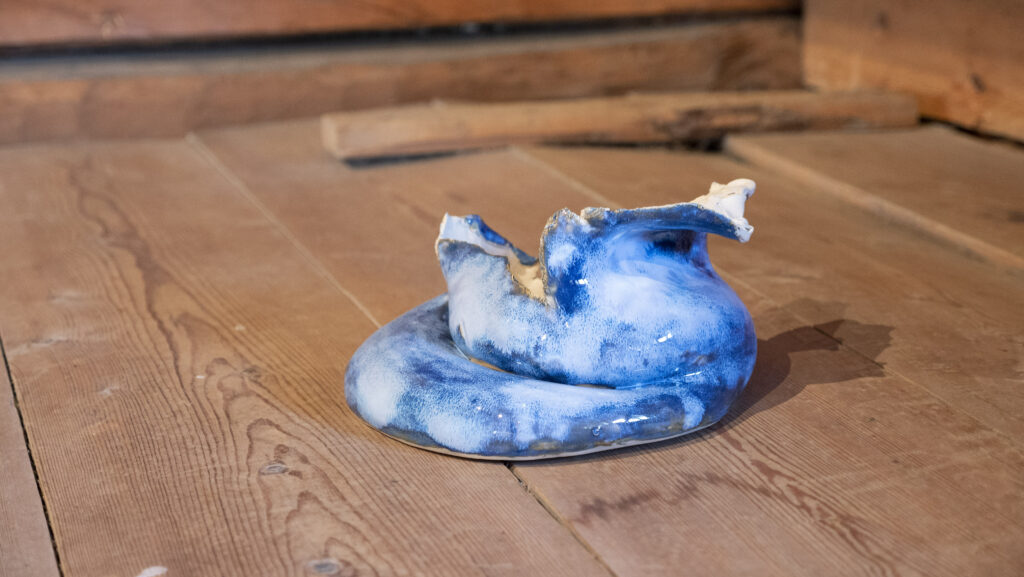
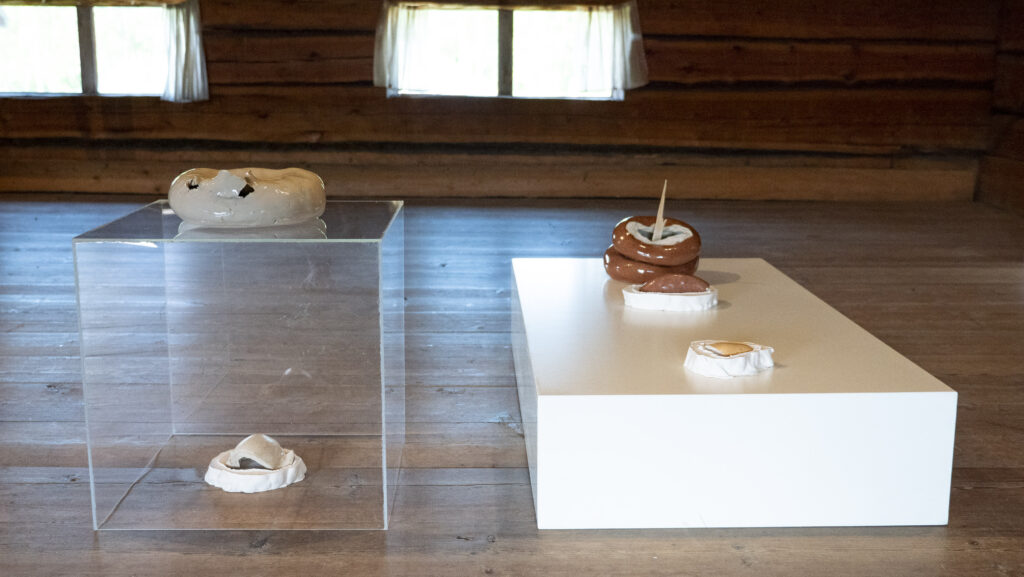


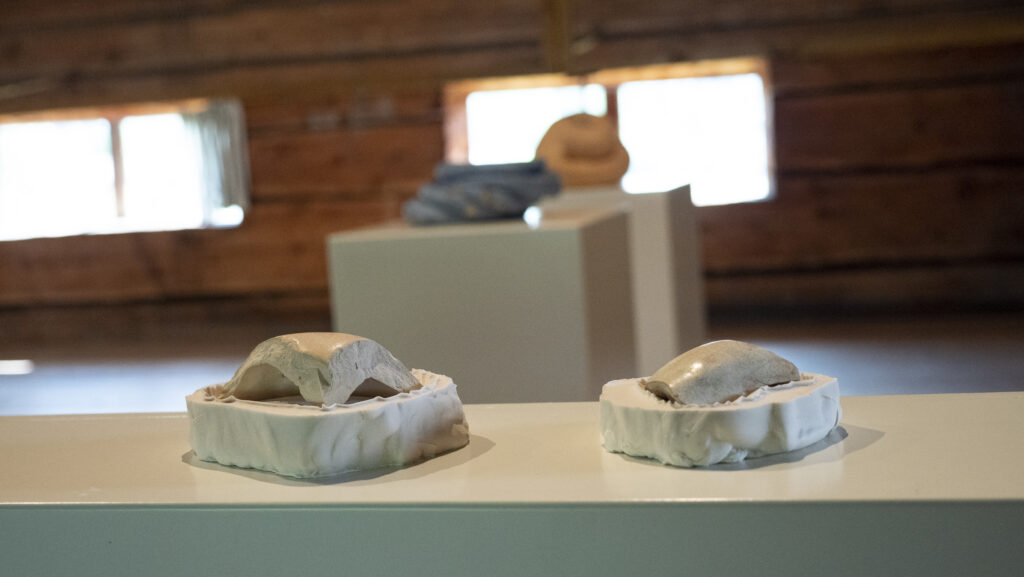

All photos: Madelen Eliasson.
